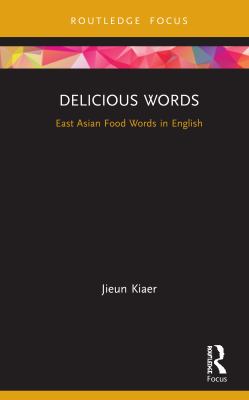
館長分享
Food is not only a basic necessity for survival, but also an essential and integral part of human life. The preparation and production of food has evolved over the centuries in parallel with human civilization. Every culture has a recognizable cuisine, a specific set of recipes using ingredients and cooking methods that are unique to the culture. Therefore, eating and drinking habits are as much representations of a culture as are arts, architecture, traditions and languages.
“Delicious words: East Asian Food Words in English” written by Jieun Kiaer is a book on food words in the English language that are of foreign origin. The book focuses on the interaction and evolution of food terms as a transnational, transcultural and translingual phenomenon, with case studies drawn from Japan to Mongolia, Hong Kong to Korea, China to Vietnam, and beyond. In order to bring food and language into dialogue, this book is organized into five chapters dealing with translingual words, first-generation food words, second-generation food words, the global food words and new words as cultural capital separately.
In discussing translingual food words, the book describes the concept of lexical borrowing, which is the adoption of words from another language. Lexical borrowing is required either to fill a gap in the English language, or to enrich the vocabulary even though words with similar meanings are available in the English language. There are two main strategies in introducing foreign food words into the English language, namely transliteration and translation. Transliteration or romanization is the conversion of the foreign food words into Roman alphabets based on phonetic similarity. For example, “tofu”, “won ton”, “sashimi”, “tempura” ,”pho” and “kimchi” are words created by transliteration from the original East Asian food terms. Translation is to find an English word or phrase that is the closest equivalent of the foreign term. For example, the terms “hot pot”, “Peking duck”, “spring roll” and “bubble tea” are translated culinary vocabularies.
After the discussion of translingual food words, the book moves on to present the diversity and common ground among the first-generation food words from East Asian languages. Most of these words entered the realm of English language in the twentieth century, particularly between 1900 and 1980. A notable example is “moon cake” traditionally eaten during Chinese mid-autumn festivities. The book also provides a detailed account of second-generation food words, which are locally produced hybrid culinary terms with foreign elements, made through compounding, derivation, or blending. Examples include “egg tart”, “pork chop bun”, “pineapple cake” and “milk tea”. As a result of globalization and the widespread use of social media, together with the prevalence of English as lingua franca, some first-generation and second-generation food words began to lose their regional connotations and enter the global lexicon. In the final chapter, the book introduces the idea of linguistic cultural capital, and illustrates, with examples, how East Asian and Western companies use foreign culinary words from one another’s language in branding their food products.
The book is an illuminating study of the relationship between food and language, using food words as the carrier. With about 140 pages, it is not a long, overly taxing read. There are clear and insightful explanations of a number of important issues related to the complex journey of food words. Food for thought, whether you are a food lover or language lover, you will certainly find the book both palatable and insightful.

